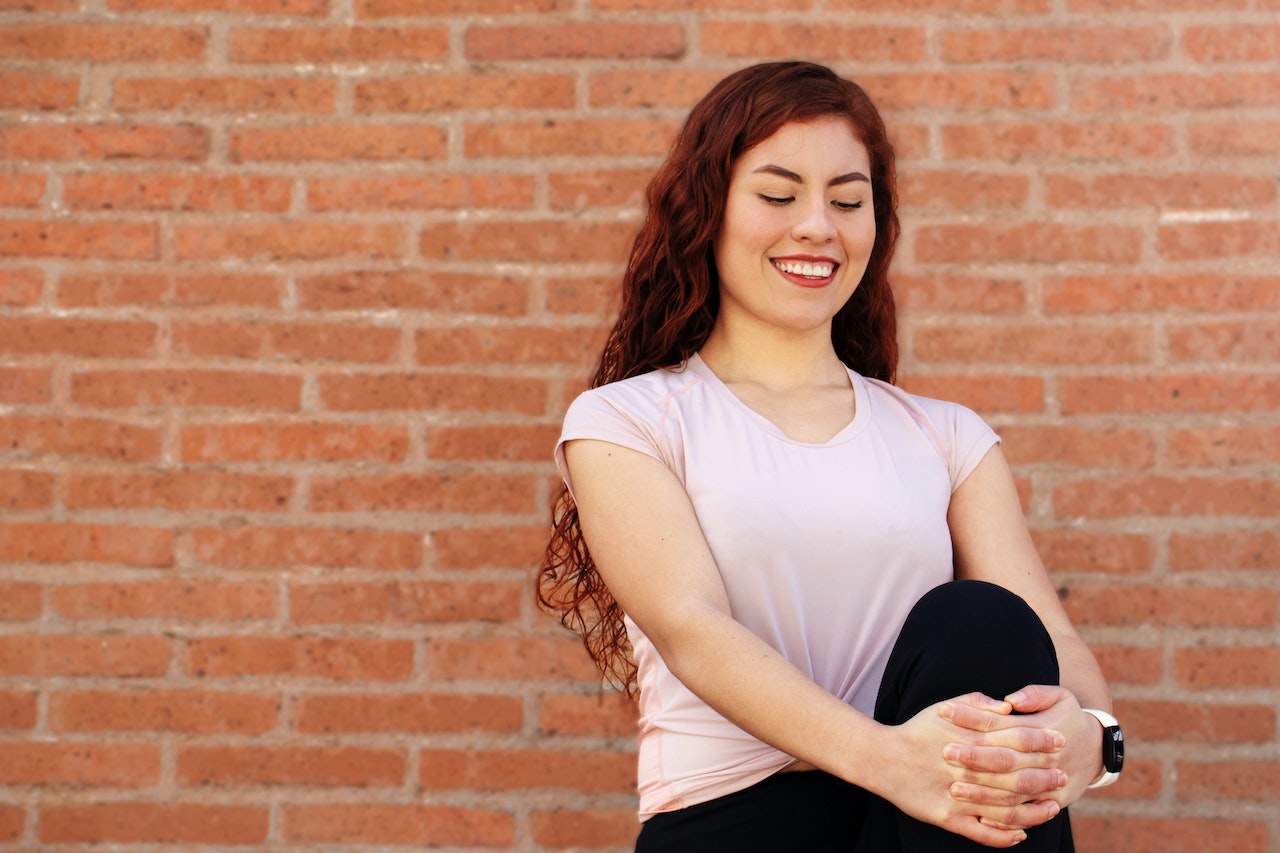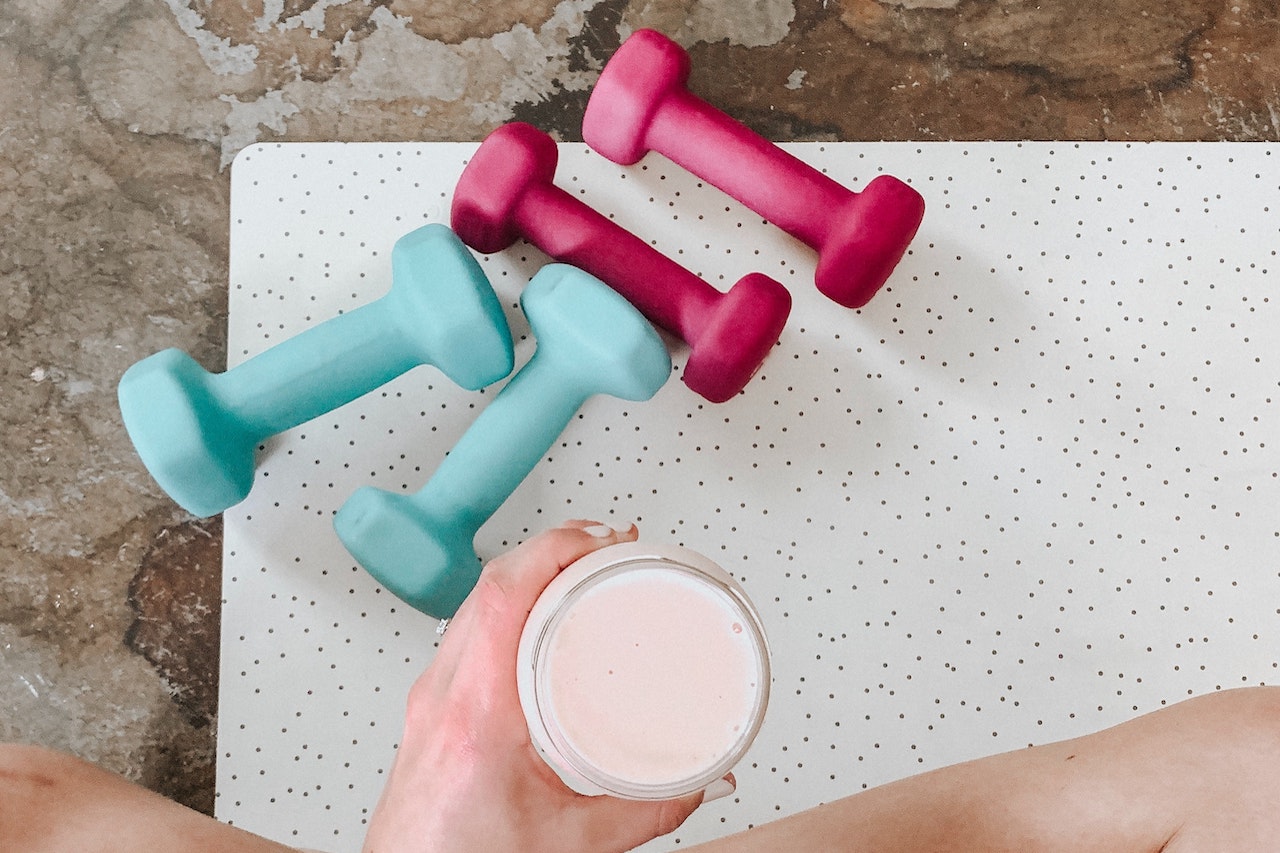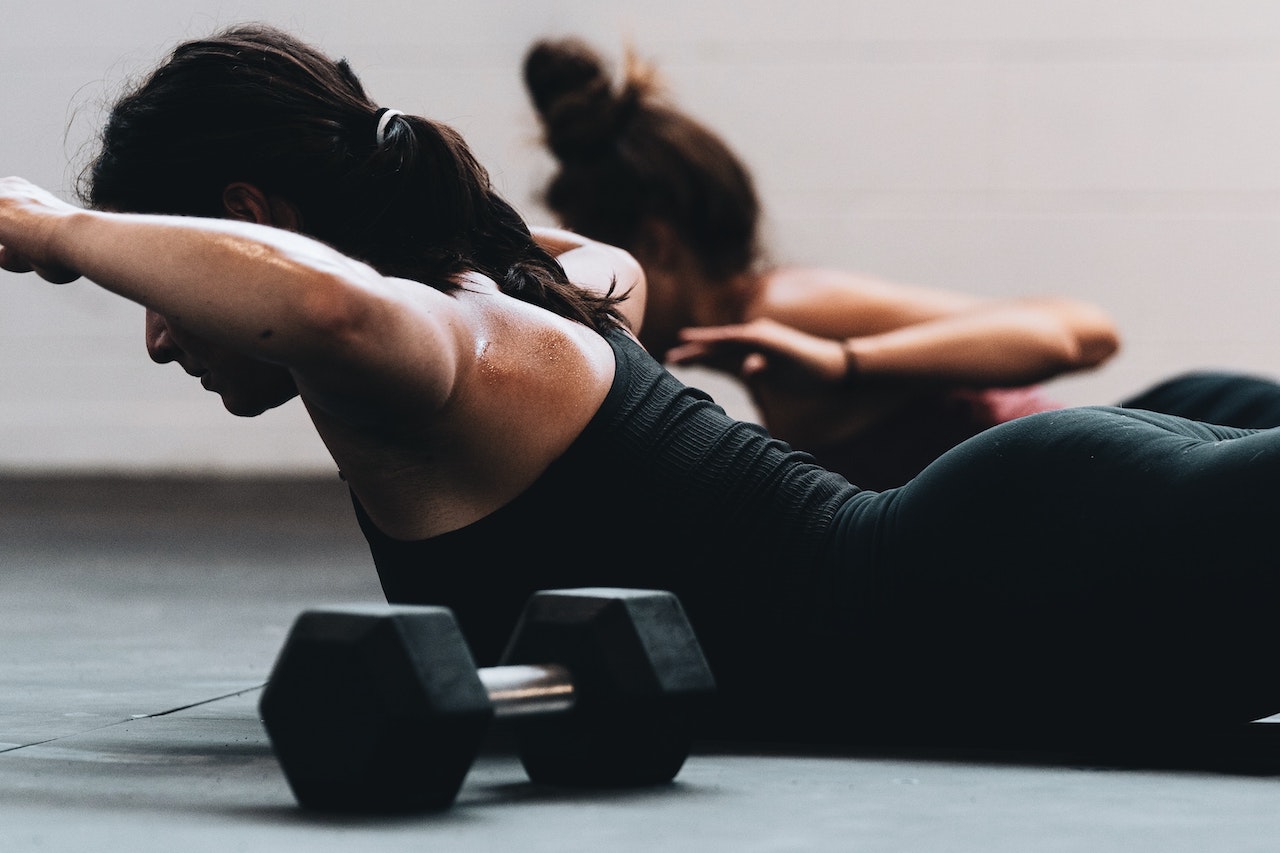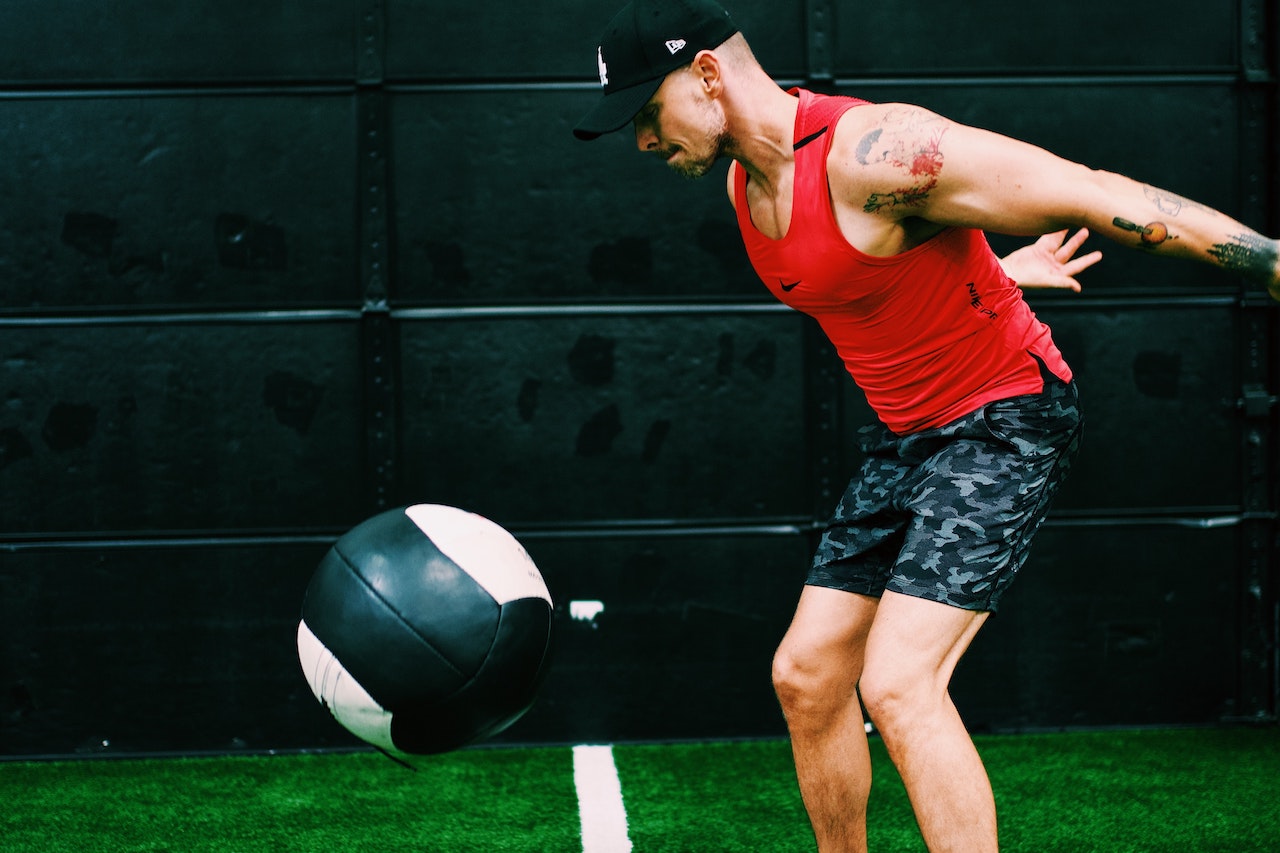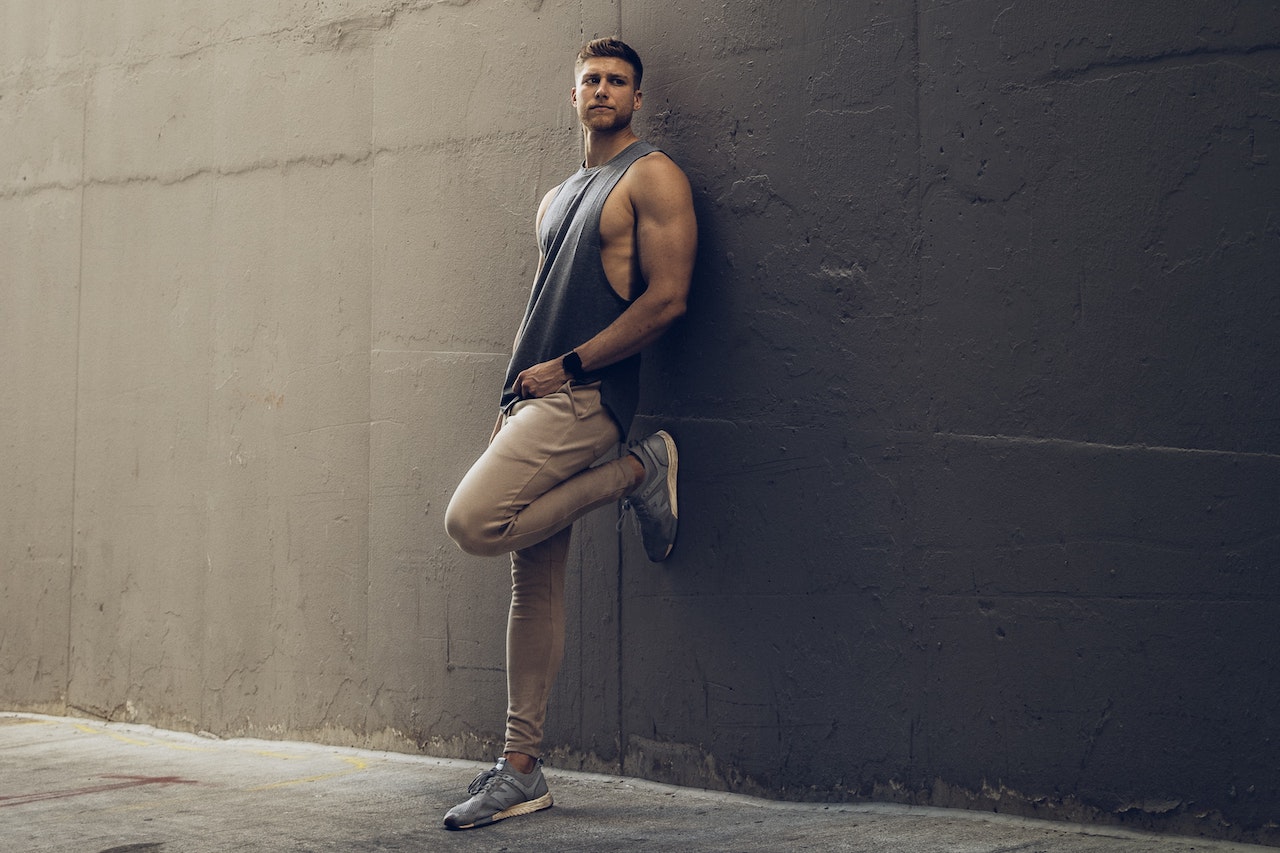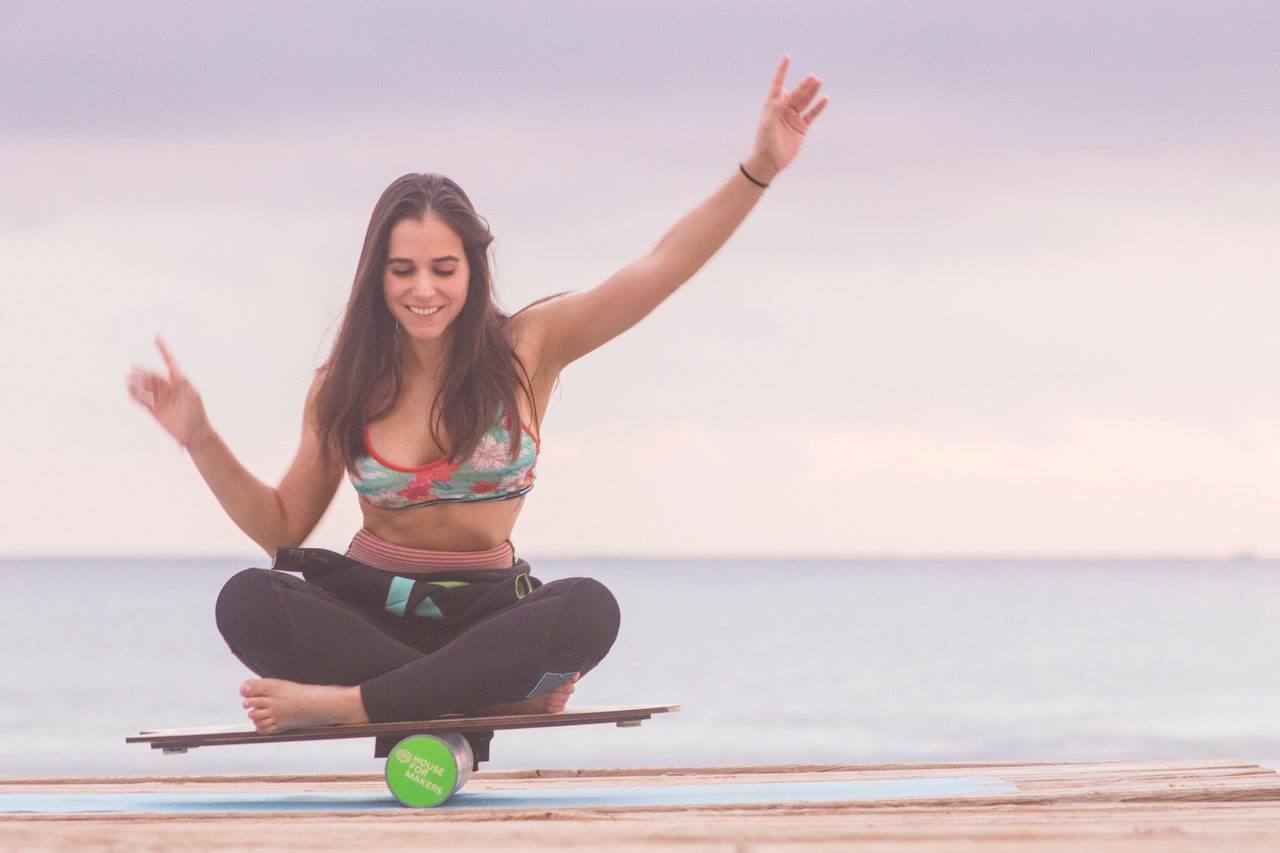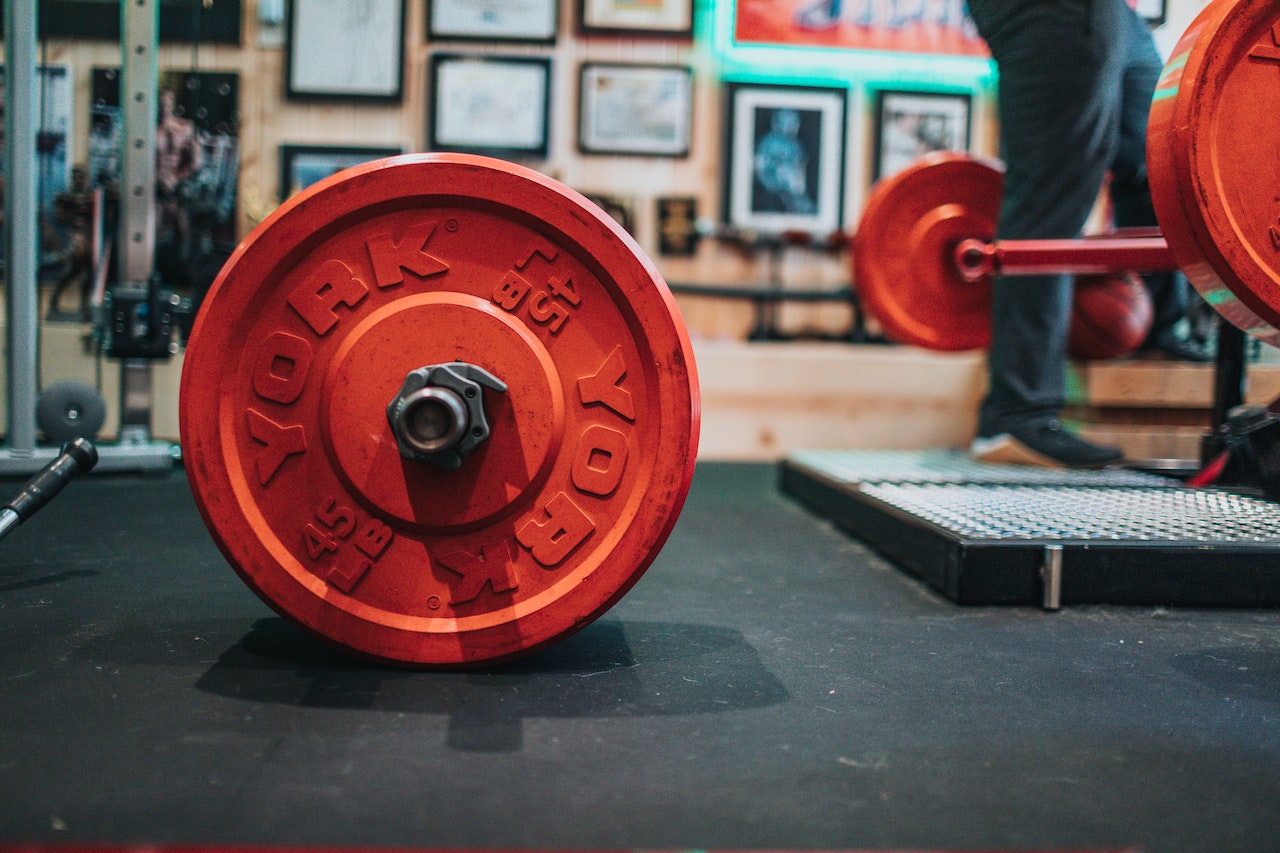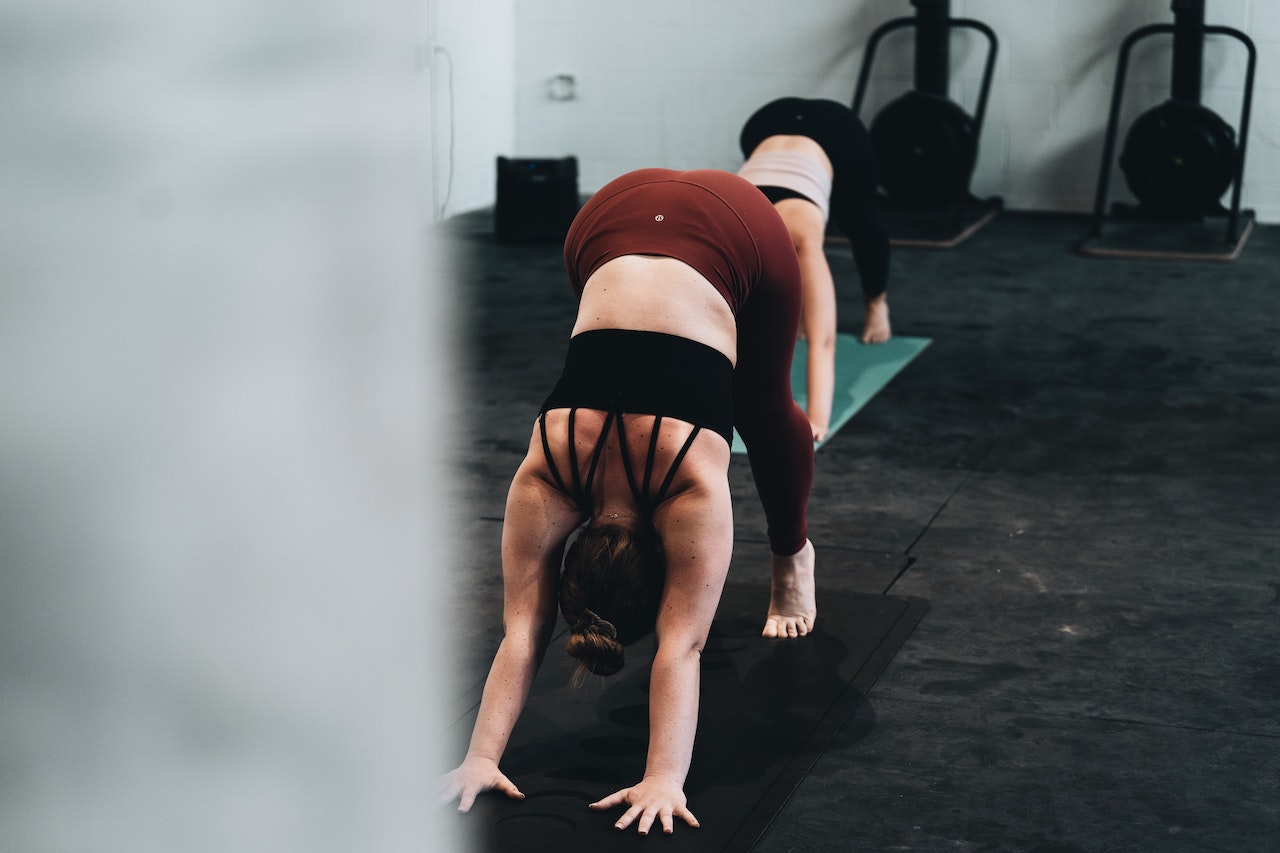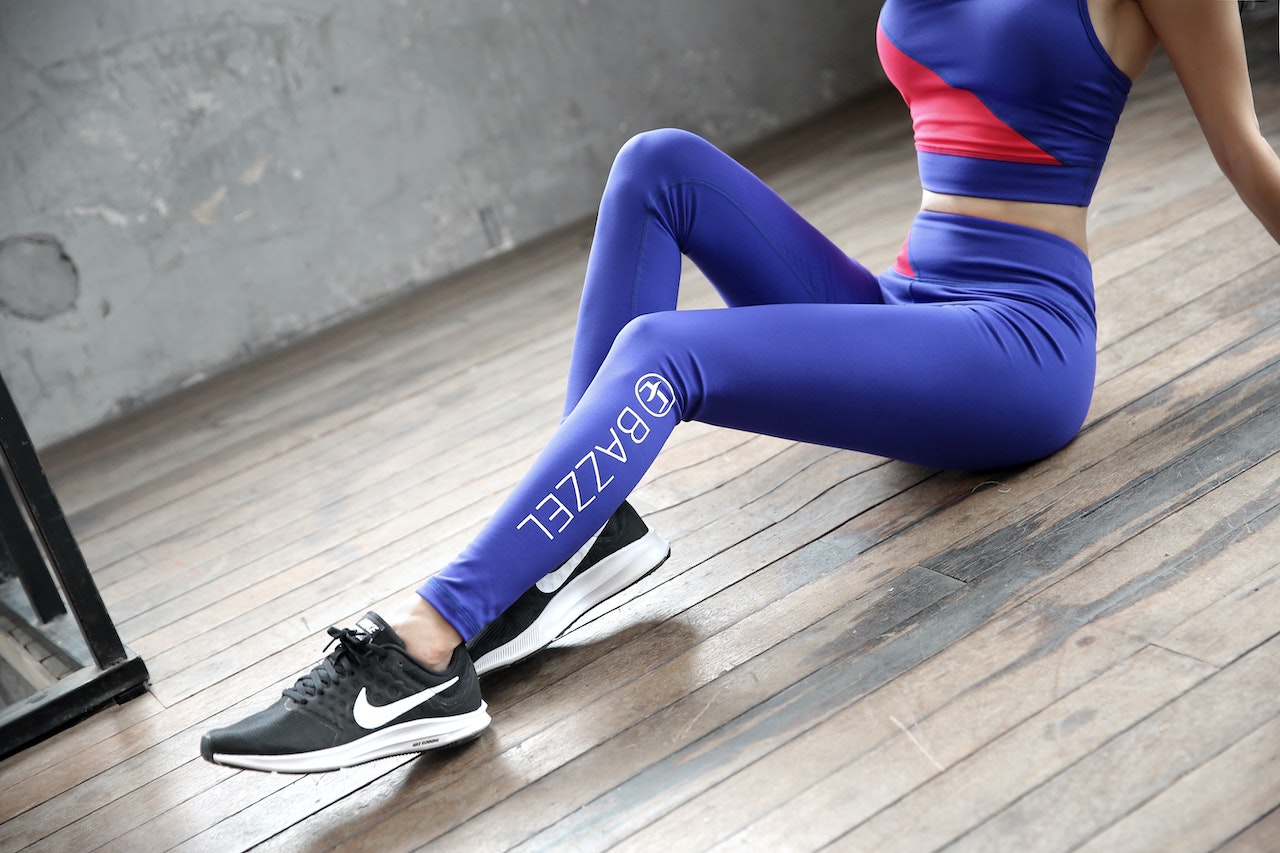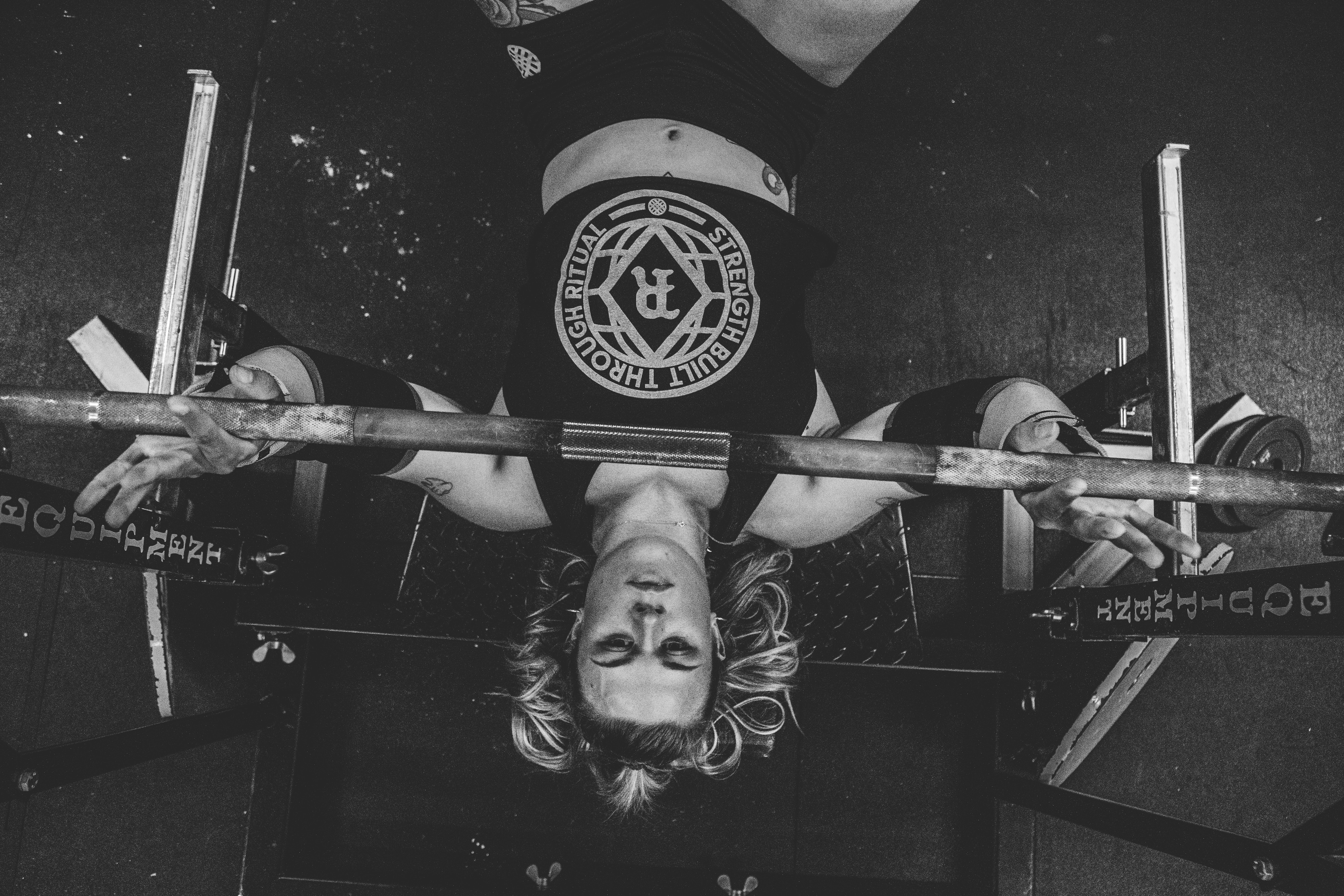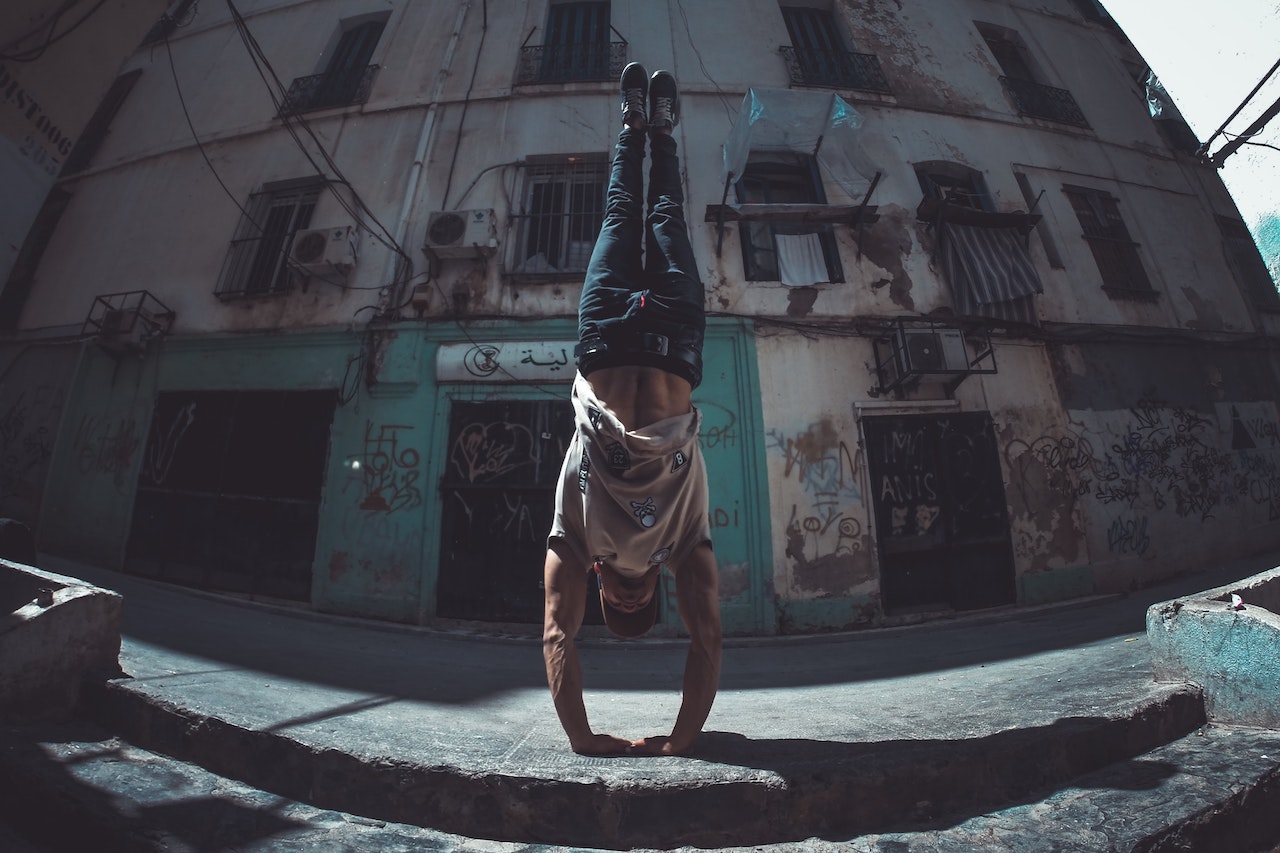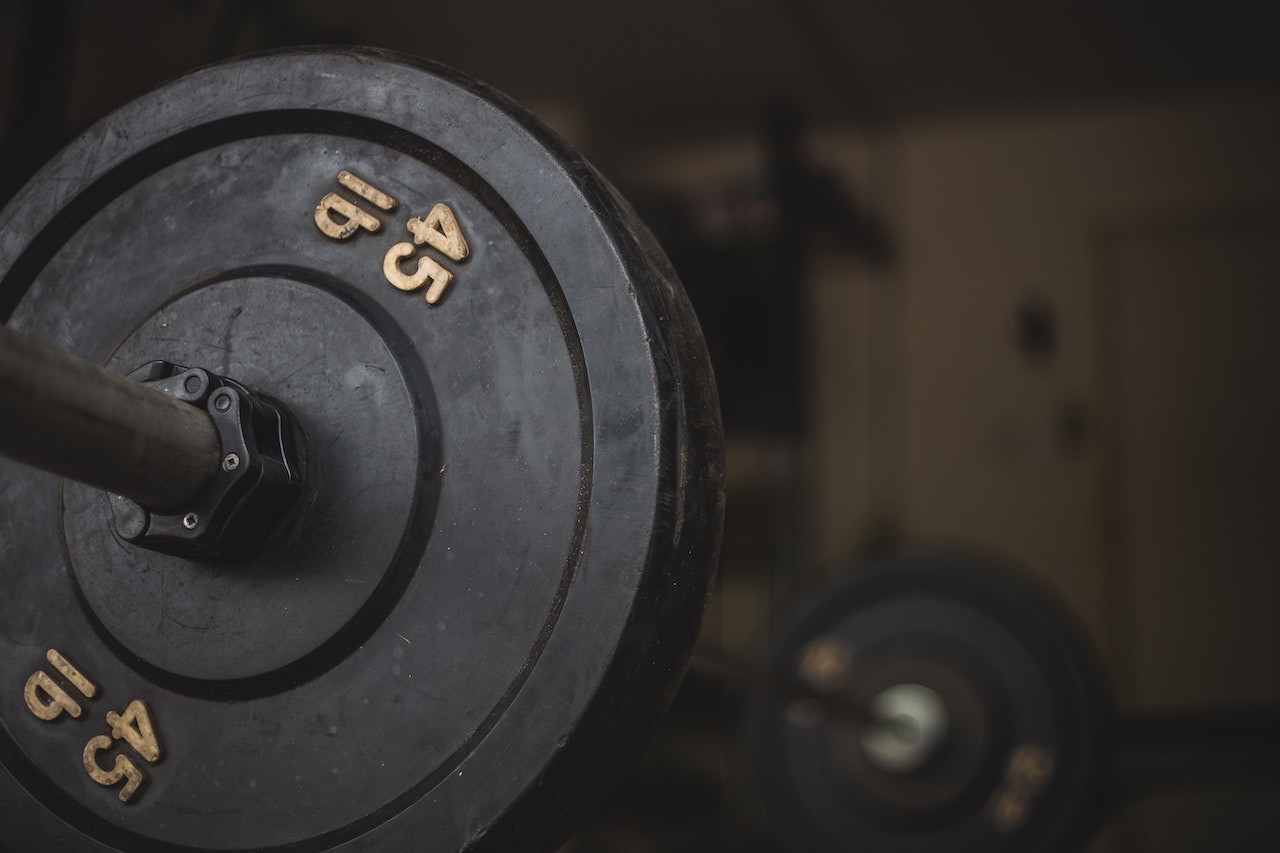Resistance bands, also known as elastic bands, are used for strength training exercises. Although resistance bands come in different shapes (some with grips) and lengths, they are essentially giant rubber bands that you pull to strengthen certain muscle groups.
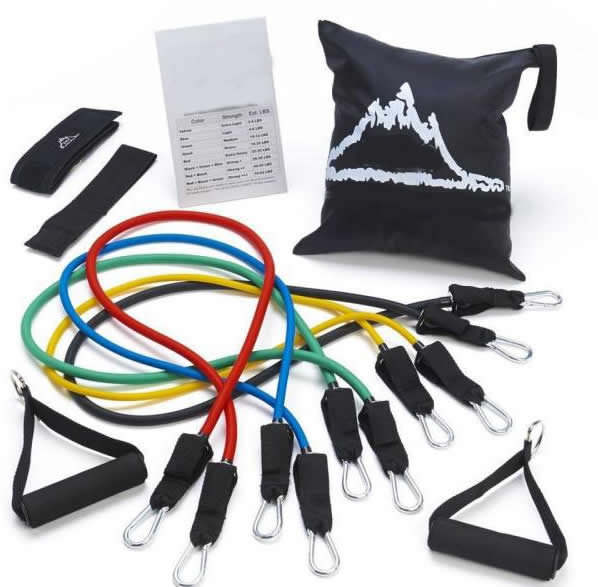
Like weight training, the aim of resistance or strength training is to increase muscle mass. Weight training is a sub-category of resistance training where the resistance is provided by gravity. The resistance provided by a resistance band is in the elasticity of the band itself. Resistance bands are much more convenient than typical strength equipment, being lighter in weight, easier to carry and consisting of rubber strips or fitted with plastic hand grips for ease of use.
A typical use of a resistance band is to place the end of the rubber band under your feet while standing, hold the other end with one or both hands and pull the band upwards to tighten it. This is the equivalent of doing a bicep curl with weights in your hands.
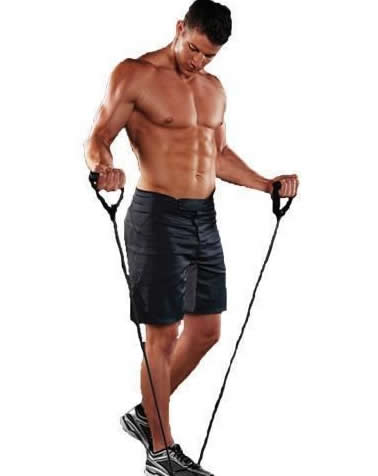
Resistance bands are a great alternative and aid, and can even complement traditional strength training programmes. They are inexpensive and versatile.
In fact, studies have shown that muscles respond to strength training as well as resistance bands as other types of equipment, such as free weights and different machines
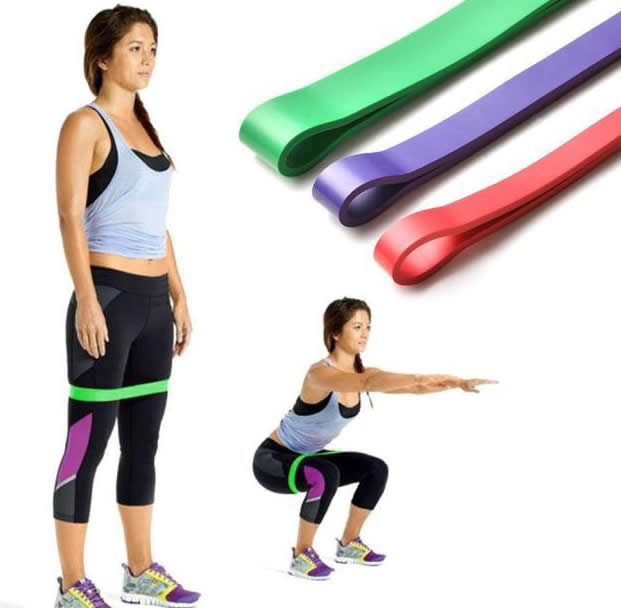
People sometimes avoid using resistance bands because they are not familiar with how to use them. Exercising with resistance bands can feel a little different compared to dumbbells and other machines. For example, during a dumbbell curl, when you bend your arm and relax it, you are working a muscle. With the same movement, a resistance band it works in a way you may not be used to.
Here are some resistance band training moves to take your strength workout to the next level without equipment.
Bicep curls
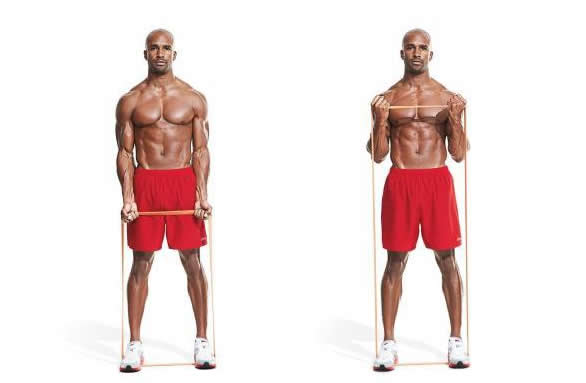
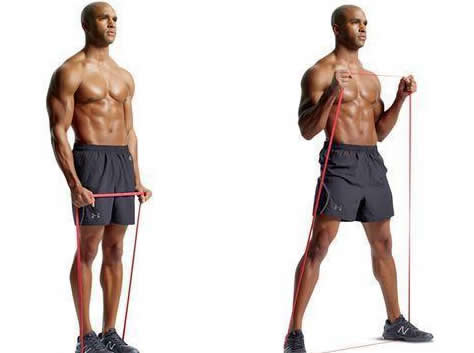
Exercise your biceps
Method:Stand with your feet hip-width apart. Bend your knees slightly and use your core muscles to keep your back straight. Hold one end of the rubber band in each hand and straighten your arms into a low 'v' shape with your palms facing upwards. Roll the band up to your shoulders for 45 seconds. Then, flip your palms to face your body and repeat for another 45 seconds.
Shoulder walk
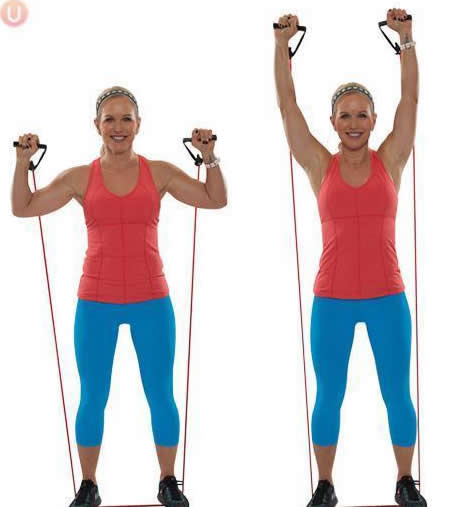
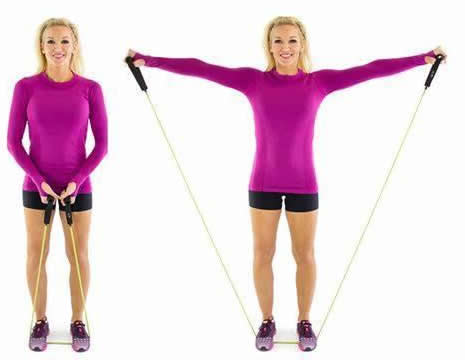
Exercise your deltoids and triceps
Method:Stand with your feet apart, hip-width apart. Bend your knees slightly and use your core muscles to keep your back straight. Hold one end of the resistance rep in each hand and hold your arms straight out in front of you. With your arms shoulder-width apart and thighs apart, raise your arms to shoulder height. Then, keeping your arms at shoulder height, lift your arms upwards vertically. Repeat for 30 seconds. Then, keeping your arms at shoulder height, pull the band away (to the sides) for 30 seconds.
Chest push + pull down
Work your pecs, upper back, biceps
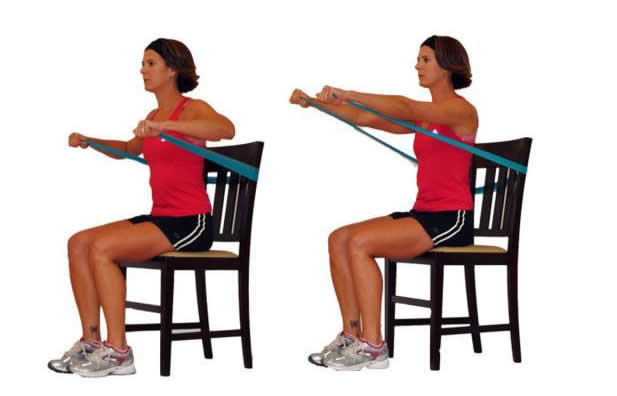
Method:Stand with your feet apart, hip-width apart. Bend your knees slightly and use your core muscles to keep your back straight. Hold one end of a rubber band in each hand and extend your arms straight out at shoulder height. Straighten your elbows back and push out. Repeat for approximately 45 seconds.
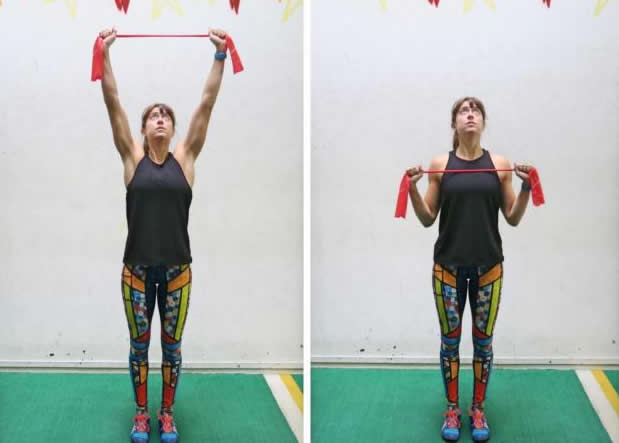
Extend your arms straight up to the ceiling. Pull your elbows down to shoulder height. Repeat for approximately 45 seconds.
Triceps extension
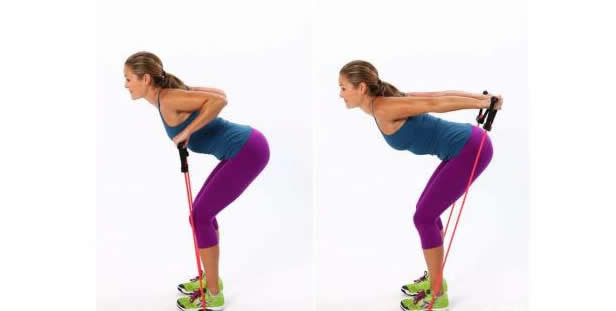
Exercise your triceps, upper back
Method:Stand with your feet apart, hip-width apart. Slightly bend your knees and use your core muscles to keep your back straight. Hold one end of the band in each hand, arms straight and shoulder-width apart. Lean forward slightly from the waist. Pull the resistance band up to your chest, keeping the tension on the band. Repeat for 30 seconds. Then, do a stretch outwards with arms straight to maximise the triceps. Repeat for 30 seconds.
Push-ups
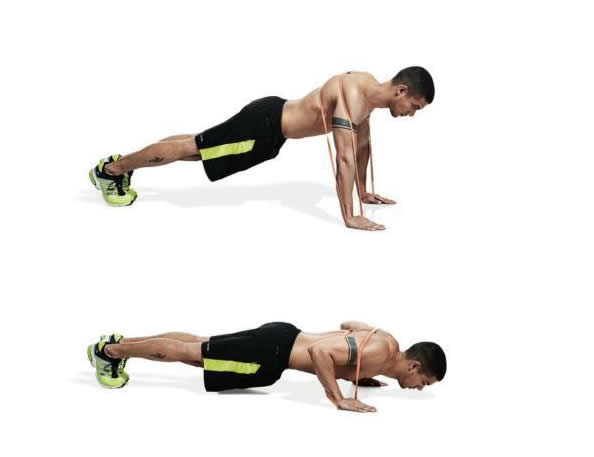
Exercise your:Biceps, pecs, deltoids, abs
Method:Place a resistance band around your back, bracing one end with each hand. Then, do a plank position with your feet hip-width apart so that you can feel the resistance band tense up. With your feet on the ground, do 10 push-ups (you can also opt for knees on the ground).
Leg extensions
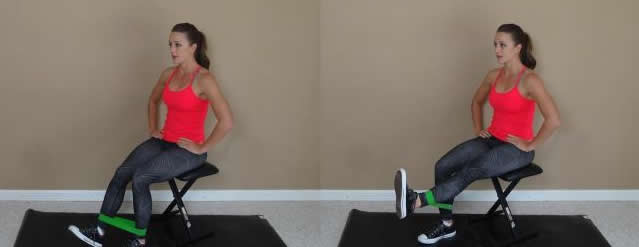
Exercise your:Quads and abs
Method:Stand next to a chair, wall or counter for extra balance, with your feet hip-width apart. Wrap the band around your ankles. Place your left leg straight out in front of you until you find tension. Lower your leg and lift it up, keeping it straight. Continue for 45 seconds. Apply slight force to the left and outwards. Repeat for another 45 seconds. Then, switch legs and repeat.
Wall squat
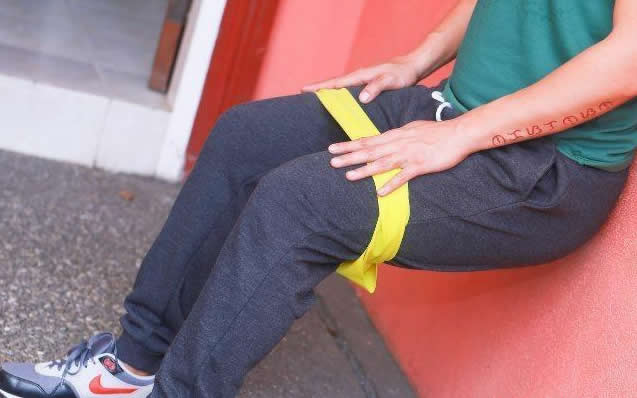
Work your: Quads, abs and gluteus maximus
Method:Tie a resistance band around your thighs and stand near a wall so that your back is in contact with it. Spread your feet hip-width apart. Walk your feet forward, bend your knees and lower your hips to knee level. Allow your knees to touch, then open them up to hip-width apart. Repeat for 30 seconds.
Side step into squats
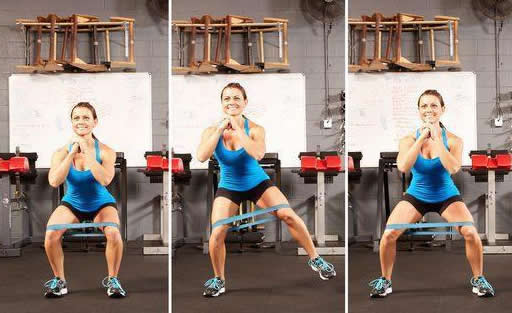
Exercise your:Gluteus maximus and quadriceps
Method:Tie a resistance band around your thighs, above your knees. Stand with your feet hip-width apart. Place your hands on your hips. Extend your right foot out 20-35cm, bend your knee and bring your hips down, then do a squat. Then, stand up and put your right foot back down. Repeat for 30 seconds. Switch legs and repeat.
Supine leg tuck
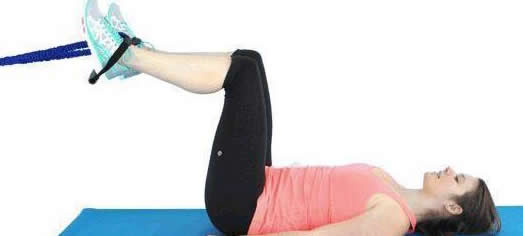
Exercise your:Abs
Method: Lying on your back, lift your legs and bend them at a 90 degree angle. Keep your legs together with your toes pointing forward. Attach a resistance band to your legs, with each foot holding one end of the band. As you tighten your legs, your abs tighten to pull the resistance towards you. Do 20 reps of the exercise.
There are many other movements in resistance band training that are similar to free weight training and can be performed with a variety of equipment to add additional resistance, both of which vary the intensity of the workout and create new stimulation to the muscles.


